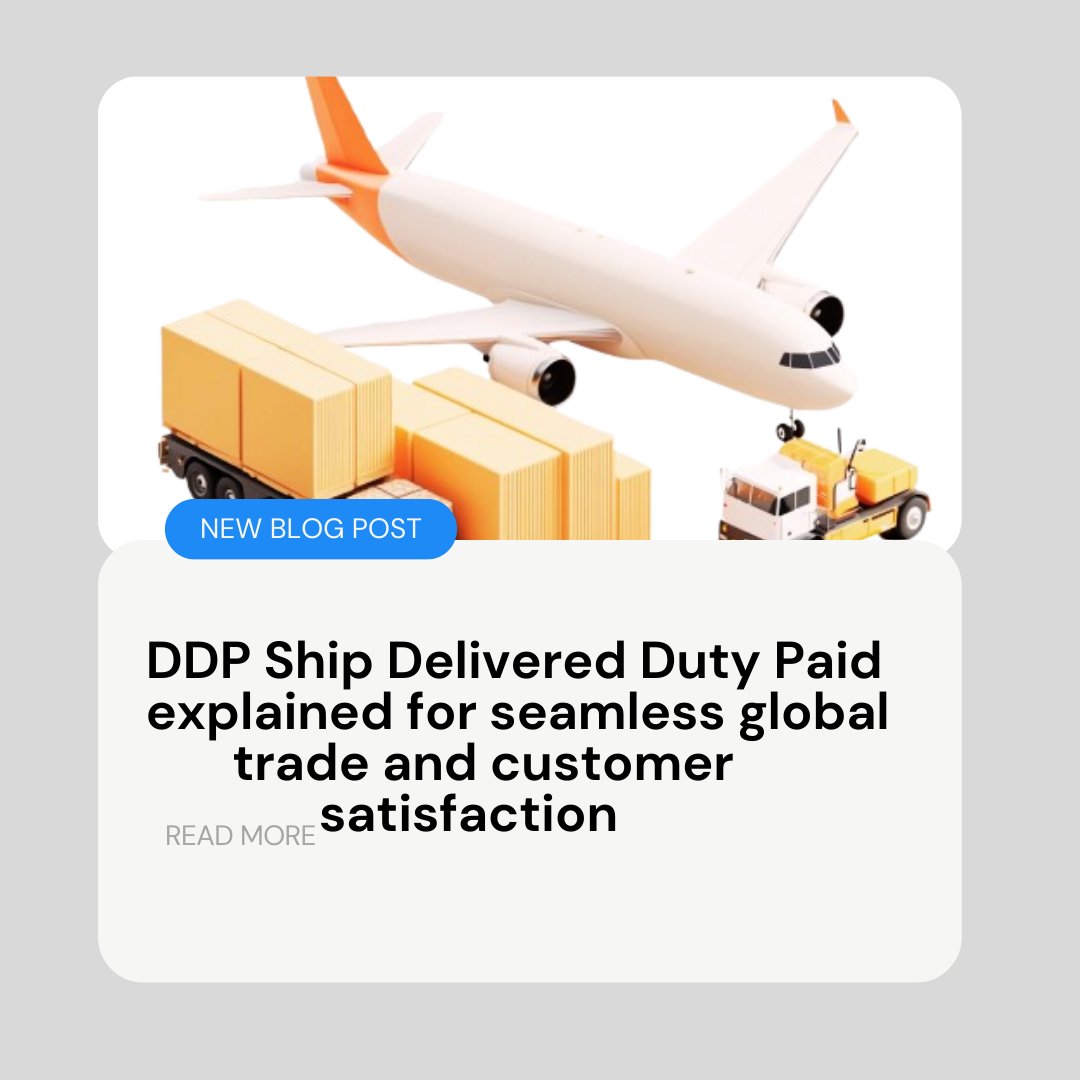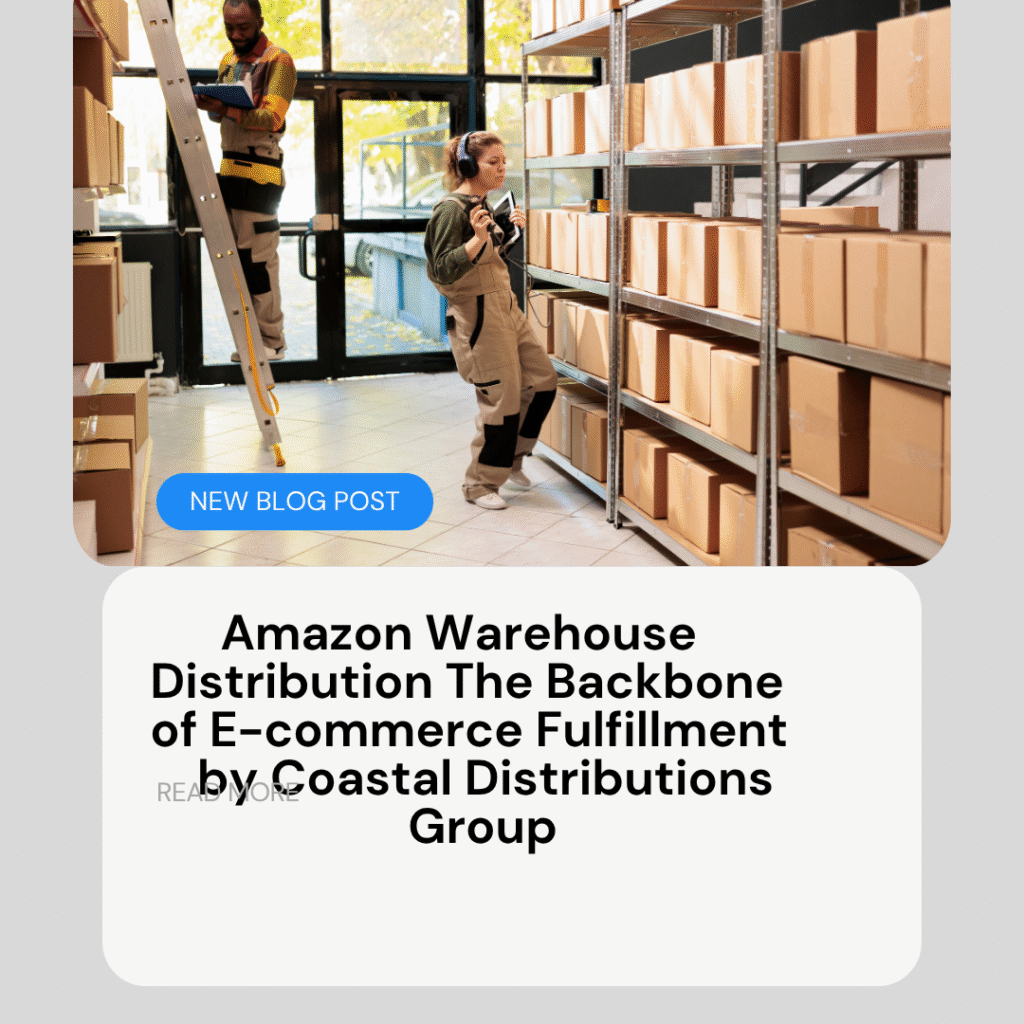DDP Ship Delivered Duty Paid explained for seamless global trade and customer satisfaction
DDP Ship Delivered Duty Paid explained for seamless global trade and customer satisfaction

Table of Contents
Delivered Duty Paid (DDP)
In today’s interconnected world, international trade has become the backbone of economic growth. Companies of all sizes rely on smooth shipping arrangements to move products across borders. However, with international transactions comes the challenge of managing customs, duties, and regulations. This is where Delivered Duty Paid (DDP) shipping plays a crucial role.
Delivered Duty Paid is important and one of the most comprehensive Incoterms defined by the International Chamber of Commerce (ICC). Under this term, the seller carries maximum responsibility: arranging transportation, covering duties and taxes, and ensuring the goods reach the buyer’s named location. For the buyer, this means minimal hassle—goods arrive ready for unloading with no hidden costs.
This article explores DDP shipping in depth—covering its meaning, step-by-step process, advantages, disadvantages, comparisons with other Incoterms, and best practices for businesses.
What Does DDP Shipping Mean?
Delivered Duty Paid (DDP) is an Incoterm that requires the seller to deliver goods to the buyer’s agreed destination while covering all associated costs, including:
- Export packaging
- Transportation charges (land, sea, or air)
- Customs clearance fees
- Import duties and taxes (VAT, GST, tariffs)
- Insurance, if applicable
The only responsibility the buyer has is to unload the goods and accept delivery.
In simple terms, DDP shipping provides a “door-to-door” solution. The seller ensures that goods pass through every stage—origin country, international transit, customs clearance, and final delivery—before handing them over to the buyer.
Step-by-Step DDP Shipping Process
To understand the scope of DDP, let’s break it down into clear stages:
1 Contract Agreement
- The buyer of products and seller agree on DDP terms.
- The delivery address (named place) must be specified, e.g., “DDP – Buyer’s warehouse, New York.”
- Pricing is negotiated to include duties, taxes, and transport costs.
2 Export Formalities
- The seller prepares goods with appropriate packaging and labeling.
- Export licenses or permits are obtained if required.
- Export customs clearance is handled at the origin country.
3 International Transport
- The seller arranges transportation by sea, air, rail, or truck.
- Freight forwarders are often used to coordinate shipments.
- Insurance may be included to protect goods in transit.
4 Import Customs Clearance
- Upon arrival of products in the buyer’s country, the seller assumes responsibility about product for customs clearance.
- Import duties, VAT, tariffs, and other taxes are paid upfront.
- A customs broker may be engaged to ensure compliance.
5 Final Delivery
- Goods are transported from the port or airport to the buyer’s specified location.
- Risk is transferred to the buyer only once the shipment arrives, ready for unloading.
Advantages of DDP Shipping
1 For Buyers
- Convenience: Buyers avoid dealing with customs or additional fees.
- Cost Transparency: The final cost includes everything—no surprises.
- Reduced Risk: The seller manages compliance with foreign trade laws.
- Customer Experience: Faster and smoother delivery enhances satisfaction.
2 For Sellers
- Market Competitiveness: Offering DDP builds trust and attracts international buyers.
- Control of Logistics: Sellers ensure the shipping process aligns with their standards.
- Stronger Relationships: Buyers appreciate hassle-free delivery, leading to repeat orders.
Challenges and Risks of DDP Shipping
Despite its benefits of DDP, DDP also presents challenges, especially for sellers.
1 High Costs for Sellers
- Sellers absorb duties, taxes, and unexpected surcharges.
- Miscalculation can lead to losses.
2 Complex Customs Regulations
- Each country has unique import rules.
- Errors in classification or paperwork may result in fines or delays.
3 Importer of Record Requirement
- In many countries, the seller must be registered as an Importer of Record (IOR).
- This adds administrative burden and legal responsibility.
4 Limited Buyer Flexibility
- Buyers cannot choose preferred carriers or brokers.
- Some buyers may prefer managing their own import process.
DDP vs. Other Incoterms
To understand DDP better, it’s useful to compare it with other common Incoterms:
| Term | Seller Responsibility | Buyer Responsibility | Risk Transfer Point |
| EXW (Ex Works) | Minimal – make goods available at seller’s site | Transport, duties, customs | At seller’s premises |
| FOB (Free on Board) | Transport to port + loading on vessel | Freight, insurance, customs | Once goods loaded on vessel |
| CIF (Cost, Insurance & Freight) | Transport to buyer’s port, insurance | Customs, inland transport | At destination port |
| DAP (Delivered at Place) | Transport to named place | Import duties & taxes | At delivery location |
| DDP (Delivered Duty Paid) | All costs until goods delivered | Unloading only | At final delivery point |
Clearly, DDP represents the maximum obligation for the seller.
When to Use DDP Shipping
DDP is most beneficial in scenarios where:
- Buyers are inexperienced with international trade and customs.
- High-value or high-volume shipments require end-to-end seller management.
- E-commerce businesses want to offer a seamless “all-inclusive” buying experience.
- Sellers want to build trust and differentiate themselves in competitive markets.
However, DDP may not be suitable for:
- Low-margin products (due to high seller costs).
- Countries with complex customs regimes.
- Transactions where the buyer prefers direct involvement in logistics.
Best Practices for Effective DDP Shipping
- Accurate Duty Calculations
- Use correct HS codes for product classification.
- Consider VAT, excise taxes, and surcharges in pricing.
- Partner with Experienced Freight Forwarders
- Freight forwarders and customs brokers help navigate complexities.
- Obtain Proper Insurance
- Protects against loss, damage, or delays in transit.
- Clear Communication with Buyers
- Set expectations regarding delivery timelines and inclusions.
- Selective Use of DDP
- Apply DDP for key markets or large orders; use other Incoterms elsewhere.
Practical Example of DDP Shipping
Imagine a company in Germany selling machinery to a client in Brazil under DDP terms:
- The German seller quotes a price inclusive of duties, VAT, freight, and insurance.
- The machinery is shipped by sea from Hamburg to Rio de Janeiro.
- Upon arrival, the seller pays Brazilian customs duties and arranges local transportation.
- The machinery arrives at the buyer’s warehouse, ready for unloading.
The buyer pays a single agreed price with no additional effort. The seller, however, has absorbed all logistics and customs responsibilities.
The Future of DDP in Global Trade
As e-commerce expands and cross-border trade grows, demand for DDP shipping is expected to rise. Buyers increasingly prefer an “Amazon-like experience” in international purchases—predictable costs and fast delivery.
At the same time, governments continue tightening customs and compliance regulations, meaning sellers must stay updated. Technology—such as automated customs classification, AI-driven freight calculators, and digital customs brokerage—will play a key role in making DDP more efficient.
Conclusion
Delivered Duty Paid DDP shipping is one of the most buyer-friendly arrangements in international trade. By taking on full responsibility for transportation, customs, and duties, sellers provide their buyers with a seamless and transparent experience.
While DDP offers competitive advantages, it also requires careful planning, cost management, and expertise in customs regulations. Businesses must weigh the benefits against the risks, applying DDP strategically to enhance trust and streamline global commerce.
In the evolving landscape of international logistics, DDP remains a powerful tool—transforming complex global trade into a straightforward process.



